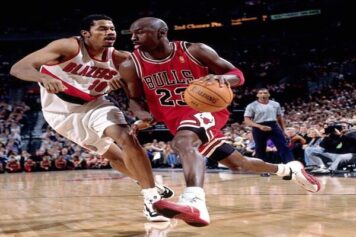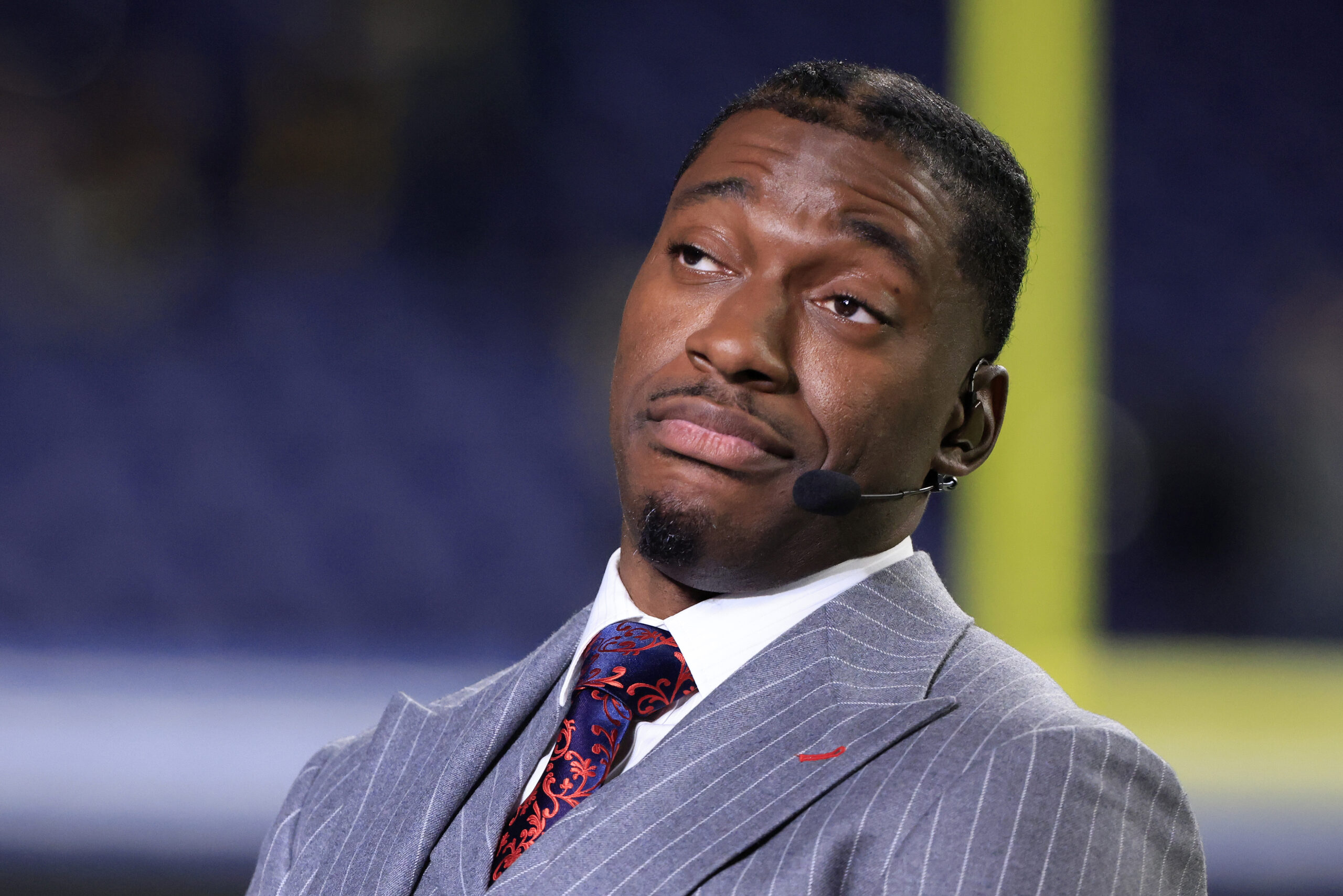“The Last Dance” has thus far proven to be as epic a documentary as we had hoped. The non-linear, deeply intimate and expansive docuseries is doing just as many had suspected, and as director Jason Hehir likely hoped, it would so; bring the remind a new generation of the spectacle that was the life of Michael Jordan during the height of his career with the Chicago Bulls, as well his precipitous exit from the game.
Recently, The Shadow League hopped on a call to discuss ESPN’s “The Last Dance” with director Jason Hehir, a noted sports documentarian who has worked with the network before on several projects.
As the documentary takes us back, so too did Hehir take us back to his sports roots in Boston while giving us some idea of how that translated into the creative process for making the film.
Jason Hehir: I’m from Boston. I was the ball boy for the B.C. basketball team when I was a little kid. And this is in the heyday of the Big East in the late 80s when Dana Barros was there. So, this was Derrick Coleman and Alonzo Mourning.
During a primetime game for the 10th anniversary of the Big East I was the ball boy at Madison Square Garden. The team took me down there with them when I was on road trips. I was a basketball fanatic. The ’86 Celtics was my era and, of course, B.C. too. But, like anyone my age who was a sports fan, I was also a Michael Jordan fan. My walls were covered with the Celtics, the Red Sox, Dwight Gooden, Darryl Strawberry and Michael Jordan.
The Shadow League: The series is non-linear and jumps around to tell the story. Why did you believe this was the best way to tell this story?
Jason Hehir: Well we knew the 97-98 season was going to be the backbone of the documentary because, without that footage, and without the season that was called The Last Dance, there wouldn’t have been a documentary.
In order to contextualize it and tell all the deeper stories we had to go back in time. In order to show you just how much went into winning the final title, we had to show you what into winning the previous titles.
We quickly realized we were going to have to jump around in time a lot. So, we decided on the idea of converging timelines. Telling the story of the first title, second, third, fourth, fifth, and have those timelines converging all the way up until episode 10, in which there are no flashbacks. Because those two timelines have met, now we’re in Utah for the final series of Michael’s Bulls career.
The Shadow League: With such an expansive project, how did you keep track of all the moving parts and meld them together? Must have been difficult.
Jason Hehir: A lot of it is based on research and hiring. If you’ve done your work researching, and you’ve hired the right people and put them in a place to succeed, then everything’s going to go well. With a project this size, and with as many challenges that we had, everything was exponential about the production process.
Both good and bad. But we had an incredible team of producers, executive producers, associate producers and editors. The people with the Jordan Brand and the NBA were exceedingly generous with our access to the NBA library and with our access to Michael. They were generous with their time in watching rough cuts and giving us their opinion, and the people at ESPN, who I’ve worked with before, were just brilliant.
The Shadow League: What was it like getting so much access to a man who has learned to shy away from the media over the years?
Jason Hehir: His team had the foresight early on to get me in front of Michael a few times just so he could get to know me and feel comfortable with me so it wasn’t like he was meeting me for the first time when we started filming.
When he finally sat down in front of the camera, he was already familiar with who I was, he already knew my vision for the project and I also think he felt safe. That I had done all the research, that I was going to tell a responsible story and that we were going to tackle some difficult subjects, but we weren’t going to do so in a salacious or irresponsible way.
So, I think what you’re seeing there is comfort and safety. Frankly, that safety came with the ability to veto anything that he doesn’t like. But I’m proud and happy to say that he never used that veto power, even though there’s some stuff on here that he was reluctant to share.
I give him a lot of credit for showing some unvarnished truths in this and he certainly had the power to wield that sword and say ‘You can’t do this’ or ‘You can’t do that’ but he never did that once.
TSL: In what ways did you guard against possible pro-MJ bias seeping into the creative process?
Jason Hehir: I would be irresponsible if I tried to skewed this toward my favorite team or player. I’d never do something like that. It was enlightening to hear someone like Isiah point out that the Celtics walked off against Detroit in 88.
I have this vision in my head of McHale being this gracious loser in going over and wishing Isiah luck, but I have no recollection that the Celtics walked off. Now, it’s a little out of context because the Celtics were on a visiting court. That was in the days when people were throwing things at them when they walked off, the Celtics were so hated. They were like the New England Patriots of their day.
So, it’s a little bit different for Detroit to walk off their home floor purely out of pettiness and vindictiveness against the Bulls. Whereas the Celtics were doing it out of bitterness but also for their own safety.
TSL: What do you hope to achieve within the viewing audience with this piece of work?
Jason Hehir: You know you’re on to something good if you’ve studied a story for the better part of a couple years, have been hearing the story, in a lot of ways, for the better part of my entire life. But we’re still hearing details that are new to you.
That was my goal, as well as educating younger people on why this team and Michael were considered great, but also to enlighten some older viewers who think they know the whole story.
TSL: There are still some pretty intense moments to come in this series. Was there any resistance from Mike or his crew on some of the more sensitive subjects?
Jason Hehir: There was never any resistance to the gambling segment and I was surprised because that is a sensitive subject. But Michael is very much of the opinion that he doesn’t have regrets in life and that he behaved the way that he behaved.
It was not only an examination of that chapter in his life, but an examination of what it meant to be famous in those times. You’re seeing the rise of tabloid journalism on shows like hard copy and inside edition.
Then, all of a sudden, it becomes a sport to tear our heroes down and to poke holes in them. Michael was seen as Teflon.
Everyone wanted to be like Mike. But the guy smiling and playing basketball in the Gatorade commercial with the kids. What we do in our culture is try to poke holes in that. What can we do to humanize someone? What can we do to knock someone off that pedestal?
Michael learned that the hard way during that time of his career. I’m glad Michael was honest with us and really glad we got a firsthand account of what it’s like to go through that rise and fall.
TSL: What are some reactionary prompts that viewers of “The Last Dance” should look out for in the future?
Jason Hehir: I think anytime we give Michael that iPad it’s a ‘drop the remote and keep your eyes peeled’ moment. It’s like a portal back through time with MJ. And his reaction to Gary Payton’s reaction to the ‘96 Finals, his reaction to Reggie Miller on the ‘98 Eastern Conference Finals.
Whoever he sees as a rival, it’s so interesting seeing him react in the moment. To see the fire that still burns when he sees their face and hears their voice, those are the kinds of things that I look forward to seeing people react to.



